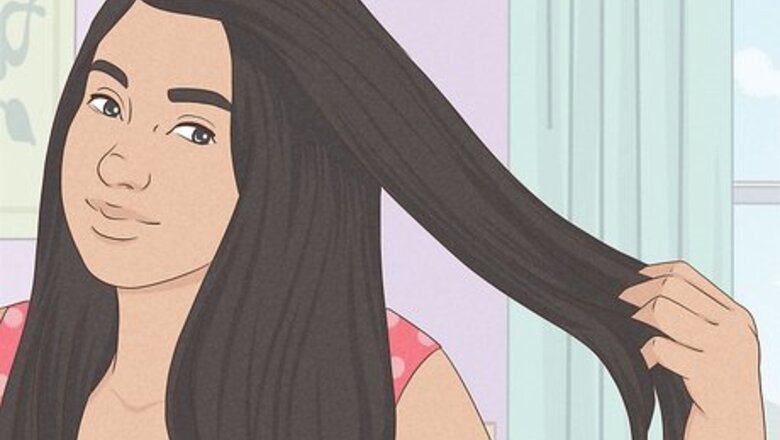
views
X
Trustworthy Source
PubMed Central
Journal archive from the U.S. National Institutes of Health
Go to source
However, hair products and chemical treatments can affect the pH of your hair—they can raise the alkalinity, making your hair's pH too high. Luckily, there are a few natural methods that may help you balance your hair's pH, restoring its healthy shine.
Lower your hair's pH if it's frizzy and dry.

If your hair's pH is out of balance, it's usually too high, or too alkaline. When that happens, the cuticles on your hair will open and your hair will look dull, dry, and frizzy. This can happen if your hair is chemically treated with certain dyes or straighteners. However, some natural shampoos can also raise the pH of your hair. You might even start to have problems with fungus or bacteria on your scalp. If you have naturally curly hair, your cuticles are already open, so you should use more acidic products to bring your hair's pH down.
Use a pH-balanced shampoo and conditioner.

You can then follow with an acidic treatment if you need to. Many natural hair cleansers are very alkaline, making them really harsh on your hair. Instead, stick to cleansers that are closer to pH-neutral. You can buy natural shampoos and cleansing bars that are pH-neutral, but you can also use pH test strips to test the acidity of any products you buy. Ideally, shampoos and conditioners shouldn't have a pH higher than 5.5. The easiest way to lower your hair's pH is to use an acidic shampoo. However, since many natural cleansers are alkaline, that can be hard when you're going green. If you use an alkaline shampoo, you can follow up with a rinse or conditioner that's slightly acidic to restore your hair's healthy shine. If you're using a cleanser with a very high pH and then a very acidic solution, though, it's going to be really harsh on your hair, so it's better to stick closer to a pH-balanced regimen.
Mix up your own pH-balanced rye flour shampoo.
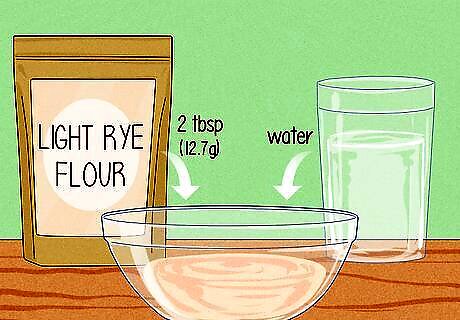
Make this in small batches so it doesn't spoil. It might seem strange, but rye flour is really popular in the natural hair care community. Just mix 2 tbsp (12.7 g) of light rye flour with a little water until it becomes a very runny paste. Work that into your scalp and along the length of your hair, then rinse your hair well. If you have any extra, you can save it for 2-3 days—but toss it out if it starts to smell yeasty.
Use baking soda followed by an acid as an occasional clarifier.
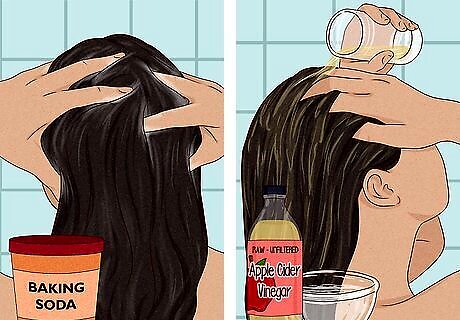
Baking soda is very alkaline, so it isn't a good regular shampoo. Many people tout baking soda as a great way to transition away from commercial shampoos. It will get your hair really clean, and for a short time, your hair might look healthy and glossy. However, baking soda is highly alkaline, so you have to follow it with an acidic rinse—like aloe juice or apple cider vinegar—to keep your hair pH balanced. This process can be really harsh, so if you're going to use it at all, only use it as an occasional deep-clean to remove product buildup. If you use an alkaline product like baking soda over a long period of time, your hair will likely start to look dull and frizzy, and it may be more prone to tangling.
Spritz your hair with aloe juice to lower the pH.
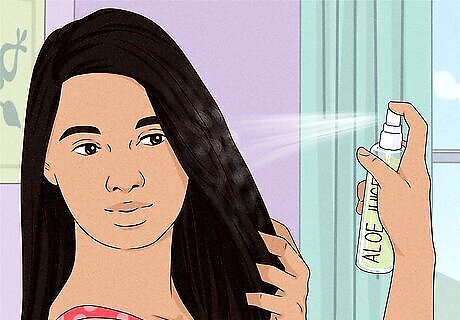
This mild acid will help balance slightly alkaline cleansers. Fill a spray bottle with whole-leaf aloe juice—which you can find at many health-food and big-box stores. After you wash your hair, mist from the roots to the tips with the aloe juice. The pH of aloe juice is about 4.5, which is fairly close to your hair's natural acidity. When you use an acidic product on your hair, it will help bring down the pH, closing the cuticles and fighting off frizz. You can also use aloe vera gel, but make sure you rinse it out very well or it might leave your hair feeling crunchy.
Rinse with diluted apple cider vinegar to bring the pH down.
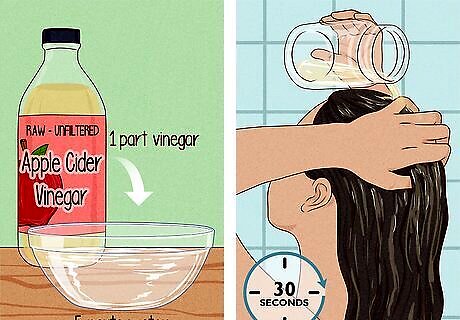
Avoid using pure ACV, though—it's probably too acidic. Apple cider vinegar has a pH of about 2-3, which is lower than your hair's pH. To keep it from being too harsh, it's important to dilute it with water—ideally, use about 1 part vinegar and 5 parts water. After you shampoo, pour the vinegar over your hair or mist it on with a spray bottle. Let it sit for about 30 seconds, then rinse it away. Typically, the vinegar smell will fade by the time your hair dries.
Deep condition your hair if you need to raise the pH.
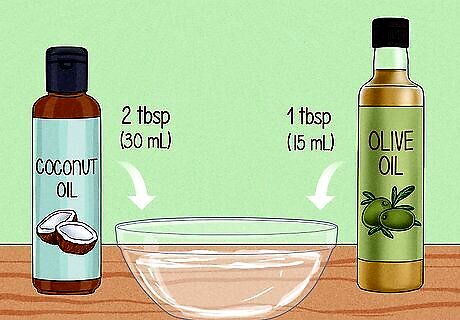
You'll only need to do this if you've been overusing acids on your hair. Since your hair is naturally acidic, it's healthiest when the pH is low. However, if you've been using a strong acid like undiluted apple cider vinegar on your hair, it might start to seem weak and dry. If that happens, cut back on the acids you're using. Also, use a deep conditioner—it won't do much to change the pH of your hair, but it will help restore moisture and shine. You can even make an all-natural hair mask yourself: Mix 2 tbsp (30 mL) of coconut oil and 1 tbsp (15 mL) of olive oil for a deeply nourishing treatment. Combine half of an avocado, 1-2 egg yolks, and 1/2 cup (120 mL) mayonnaise for a mask that will hydrate even the tightest curls. Blend 8 strawberries, 2 tbsp (30 mL) of mayonnaise, and 1 tbsp (15 mL) of honey for a mask that will leave your hair smelling as good as it looks!
Try balancing your diet.

Pay attention to the pH of the foods you eat. The way you eat can affect your whole body—including your scalp and hair. If you tend to eat a lot of foods that are more alkaline, like dairy and poultry, your hair might start to show that. Try adding in more acidic foods like berries, vinegar, and yogurt to see if that makes a difference.











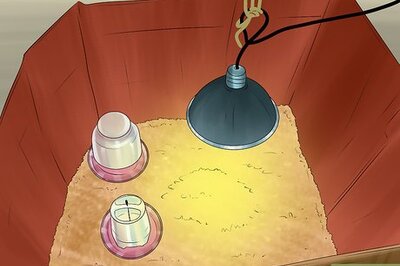




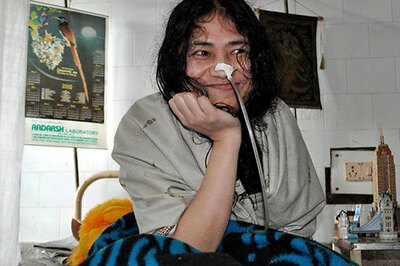
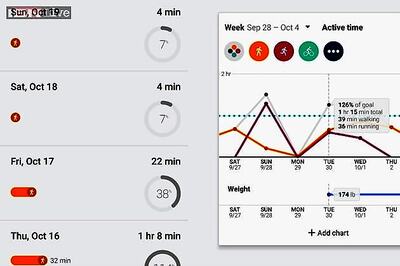


Comments
0 comment